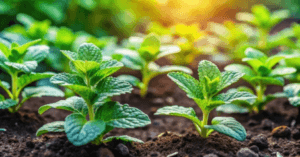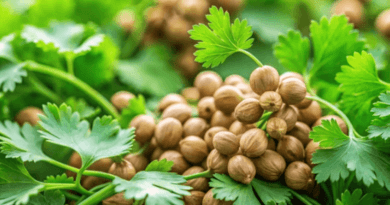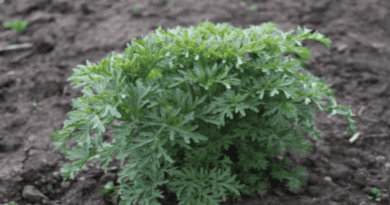How to Garden Spearmint
Spearmint (Mentha spicata) is a versatile and aromatic herb. Its refreshing flavor makes it a popular choice for teas, culinary dishes, and home remedies. Learning to grow spearmint in your garden is straightforward and rewarding. Follow this guide to create a thriving spearmint patch.
Choosing the Right Location

Spearmint grows best in well-drained soil with partial to full sunlight. Look for a spot that receives at least 4-6 hours of sunlight daily. If your garden soil is clay-heavy, improve its texture by adding compost or organic matter. Alternatively, you can use containers to ensure better drainage.
When planting outdoors, keep spearmint away from other herbs. This plant spreads rapidly and can overtake nearby plants. Using barriers or pots can help control its growth.
Preparing the Soil
Healthy soil is key to a thriving spearmint garden. Aim for slightly acidic to neutral soil, with a pH range of 6.0 to 7.0. Test your soil with a pH kit to determine its acidity. Amend it with compost or well-rotted manure for added nutrients.
Loosen the soil before planting to enhance aeration. Break up clumps and remove weeds to give spearmint the best start. This preparation ensures the roots establish firmly and absorb water efficiently.
Planting Spearmint

Plant spearmint in early spring after the frost has passed. If you’re using seeds, start them indoors about 6-8 weeks before the last frost date. Transplant seedlings outdoors when they’re strong enough to withstand outdoor conditions.
Space the plants 12-18 inches apart. This allows room for growth and prevents overcrowding. For container gardening, choose pots that are at least 12 inches deep and wide. Use a high-quality potting mix to give the plants a healthy foundation.
Watering and Maintenance
Spearmint thrives in moist soil, but overwatering can lead to root rot. Water regularly, especially during dry spells. Check the top inch of soil; if it feels dry, it’s time to water.
To keep your spearmint healthy, prune it regularly. Trimming encourages new growth and prevents the plant from becoming woody. Remove any yellow or damaged leaves promptly.
Controlling Pests and Diseases
Although spearmint is resilient, it can face challenges like aphids, spider mites, and rust. Check your plants weekly for signs of infestation. Use insecticidal soap or neem oil to manage pests naturally.
For diseases like rust or powdery mildew, improve air circulation around the plants. Avoid overhead watering, as excess moisture on leaves promotes fungal growth.
Harvesting Spearmint
You can start harvesting spearmint once the plant is 4-6 inches tall. The best time to harvest is in the morning when the essential oils are most concentrated. Use sharp scissors to cut the stems just above a leaf node.
Frequent harvesting encourages fuller growth. For drying, hang bundles of spearmint in a cool, dark space. Store dried leaves in airtight containers for later use.
Expanding Your Spearmint Garden
Spearmint propagates easily through cuttings or division. To grow from cuttings, snip a healthy stem and place it in water. Once roots form, plant it in soil. For division, dig up the plant and separate the roots, then replant them in new locations.
Growing spearmint is simple and highly rewarding. With the right care, your garden will produce lush, aromatic leaves for years. Follow these tips to create a spearmint patch that thrives in any garden.
References
- “How to Grow Mint in Your Garden.” Gardening Know How.
- “The Ultimate Guide to Mint Plants.” The Spruce.
- “Growing Herbs: Spearmint.” University of Maryland Extension.




